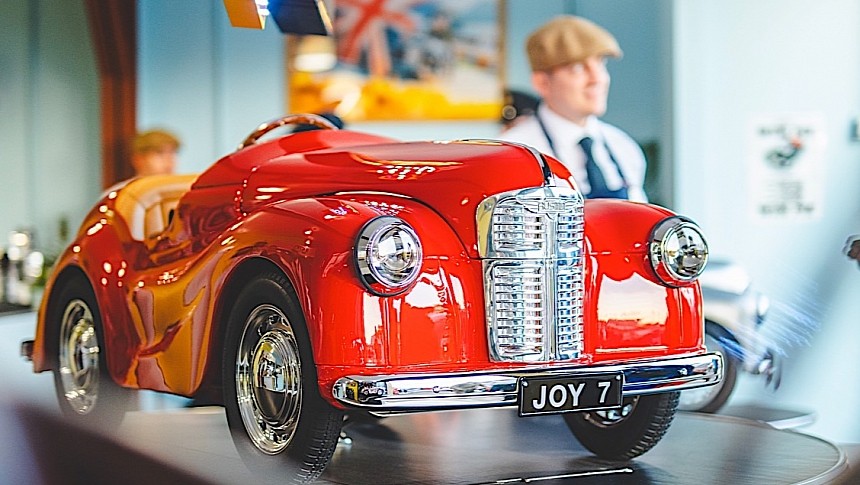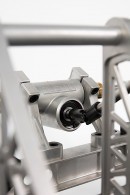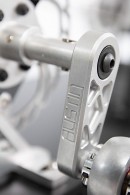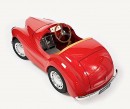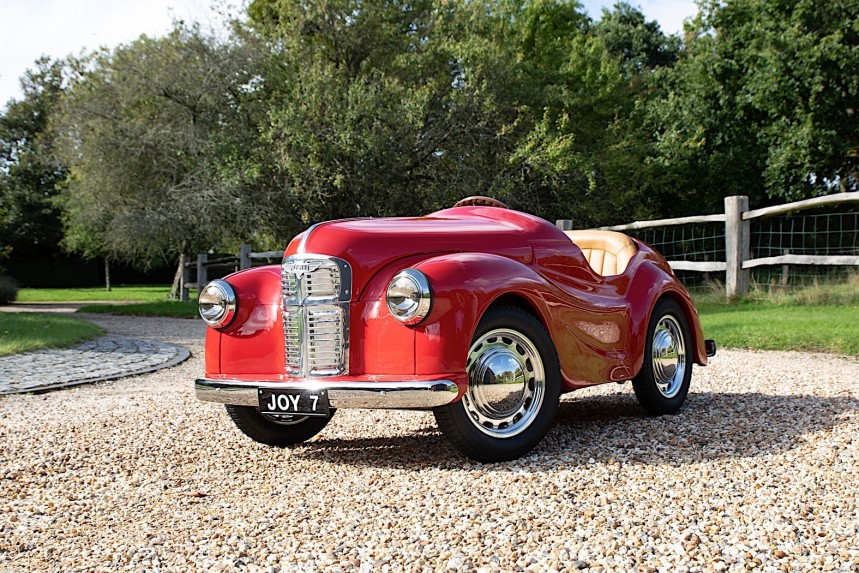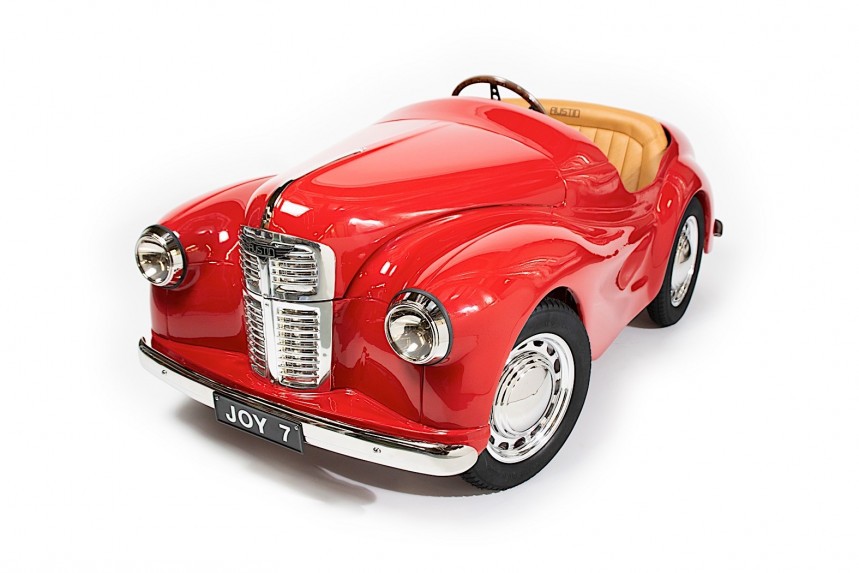Christmas is close enough for all of us to start worrying about what we're gonna get for our loved ones and self. Chances are many of you are already drafting shopping lists and do some budget math. Here's something to throw your plans off.
I'm not sure how many of you are into pedal cars, but if you have a young one around, chances are they are very much into them. Pedal cars give kids a feeling they're grown-ups, let them play driver, and bring joys to their faces. And there are many models to choose from, some made for the budget-oriented family, others made for the rich folk who would like their kids to show off from a very young age.
The J40 Continuation we have here falls somewhere in between. It's expensive enough to keep average Joes away from it, but not expensive enough to make it exclusive. And it also has quite the history to it.
The J40 pedal car was born in England in the hands of a company called Austin Motor. That's right, the makers of life-size hits like the Austin, Metro, and of course the original Mini. They also made something called the Devon/Dorset, and this bit of info will become relevant in a bit.
Back in 1949, in a bid to give coal miners in South Wales who got injured enough as to no longer be able to work in a mine something to do, Austin built a factory there. It was called Austin Junior Car Factory, it operated on a not-for-profit basis, and made pedal car replicas of the 1948 Devon/Dorset.
Those replicas were called J40, and were successful enough that from 1949 to 1971, when production stopped, over 32,000 of them were made. That may not seem like much, but if you know each was worth the average salary in the country for two weeks, it does put things into perspective.
The cars were made of scrap metal supplied by another Austin facility, and in terms of shape and paint they replicated the real cars they were based on. They came with working headlights and horns, wheels shod in Dunlop tires, and opening hood and trunk.
The original J40 were used for anything from entertaining kids of private British families to appearing in road safety movies and at fairgrounds. It's not clear how many of them survive to this day, but there are people still selling them, with prices going, depending on condition, from $550 to $6,000.
All of the above means there's still a market for these things, and a company called Austin Pedal Cars, "the only dedicated Austin J40 pedal car sales, service, restoration, and community specialist in the world" (and owners of the Austin trademark) plans to take advantage of that.
Austin Pedal Cars was at the Goodwood Revival event back in September, and it brought with it something called the J40 Continuation. It's not some range of restored J40s from the original run, but the "first new Austin pedal car" to come out since 1971.
Like the Continuation word in its name says, the model is a tribute to the one from decades ago, and came to be at the end of three years of hard work from company engineers. But despite looking about the same as what came before, it is "radically different."
The body is not made of scrap metal, but from new, light aluminum formed by hand. The metal was bent and twisted in such a way as to create a perfect representation of the British car-making style. From place to place, especially on the headlight surrounds, bumpers, grille, and caps pulled over the aluminum wheels, chrome shines away beautifully. Just like before, the trunk and hood open.
It's the interior that makes the pedal car something to look forward to. The single, bench-like seat fitted in there is covered in leather. Before it sits a wooden steering wheel, and to one side the controls for the handbrake.
The dashboard of the Continuation features electronic gauges, including one that reads real GPS data to show the speed of the vehicle. The fuel gauge, on the other hand, shows details about the charge levels of the car's battery – this piece of hardware is rechargeable, and is used to power the car's lights and horn.
Turning on the J40's ignition actually turns on the vehicle's battery-powered systems. It moves under the power supplied by the driver's feet, pushing on a CNC-machined billet aluminum pedaling system. Stopping power is handled by disc brakes, and steering is done by means of rack and pinion.
Austin Pedal Car plans to make the J40 Continuation a constant presence in our life, thus it intends to mass-produce it. It will start doing so with a limited, 49-units strong run (a nod to the year the original factory opened) called the Legacy Edition.
This one will bring a few exclusive extras, including the Ensign Red paintwork originally used on the pedal car, a chassis plate reading Legacy, and the chassis number, which will pick up from where the factory left off. An Austin tool kit and a leather document folder with pen are also thrown into the mix.
And now comes the hard part. The original J40 may have been expensive, but this one is clearly over the top. Austin is asking £25,000 for one, which is over $30,000 in American currency. Just to give you an idea of what that means, consider the fact a brand-new Dodge Dodge Challenger, the full-grown American muscle car, sells for just a little more than that.
The J40 Continuation we have here falls somewhere in between. It's expensive enough to keep average Joes away from it, but not expensive enough to make it exclusive. And it also has quite the history to it.
The J40 pedal car was born in England in the hands of a company called Austin Motor. That's right, the makers of life-size hits like the Austin, Metro, and of course the original Mini. They also made something called the Devon/Dorset, and this bit of info will become relevant in a bit.
Back in 1949, in a bid to give coal miners in South Wales who got injured enough as to no longer be able to work in a mine something to do, Austin built a factory there. It was called Austin Junior Car Factory, it operated on a not-for-profit basis, and made pedal car replicas of the 1948 Devon/Dorset.
Those replicas were called J40, and were successful enough that from 1949 to 1971, when production stopped, over 32,000 of them were made. That may not seem like much, but if you know each was worth the average salary in the country for two weeks, it does put things into perspective.
The cars were made of scrap metal supplied by another Austin facility, and in terms of shape and paint they replicated the real cars they were based on. They came with working headlights and horns, wheels shod in Dunlop tires, and opening hood and trunk.
All of the above means there's still a market for these things, and a company called Austin Pedal Cars, "the only dedicated Austin J40 pedal car sales, service, restoration, and community specialist in the world" (and owners of the Austin trademark) plans to take advantage of that.
Austin Pedal Cars was at the Goodwood Revival event back in September, and it brought with it something called the J40 Continuation. It's not some range of restored J40s from the original run, but the "first new Austin pedal car" to come out since 1971.
Like the Continuation word in its name says, the model is a tribute to the one from decades ago, and came to be at the end of three years of hard work from company engineers. But despite looking about the same as what came before, it is "radically different."
The body is not made of scrap metal, but from new, light aluminum formed by hand. The metal was bent and twisted in such a way as to create a perfect representation of the British car-making style. From place to place, especially on the headlight surrounds, bumpers, grille, and caps pulled over the aluminum wheels, chrome shines away beautifully. Just like before, the trunk and hood open.
It's the interior that makes the pedal car something to look forward to. The single, bench-like seat fitted in there is covered in leather. Before it sits a wooden steering wheel, and to one side the controls for the handbrake.
Turning on the J40's ignition actually turns on the vehicle's battery-powered systems. It moves under the power supplied by the driver's feet, pushing on a CNC-machined billet aluminum pedaling system. Stopping power is handled by disc brakes, and steering is done by means of rack and pinion.
Austin Pedal Car plans to make the J40 Continuation a constant presence in our life, thus it intends to mass-produce it. It will start doing so with a limited, 49-units strong run (a nod to the year the original factory opened) called the Legacy Edition.
This one will bring a few exclusive extras, including the Ensign Red paintwork originally used on the pedal car, a chassis plate reading Legacy, and the chassis number, which will pick up from where the factory left off. An Austin tool kit and a leather document folder with pen are also thrown into the mix.
And now comes the hard part. The original J40 may have been expensive, but this one is clearly over the top. Austin is asking £25,000 for one, which is over $30,000 in American currency. Just to give you an idea of what that means, consider the fact a brand-new Dodge Dodge Challenger, the full-grown American muscle car, sells for just a little more than that.
